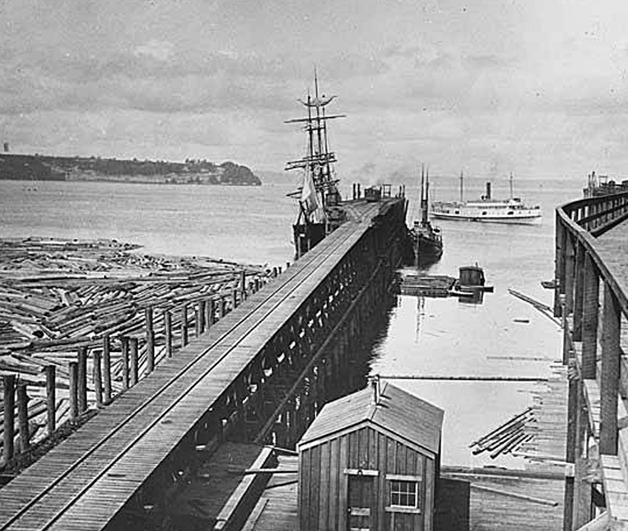Gary Tarbox knows a thing or two about railroads in the Pacific Northwest.
As vice president of the Northern Pacific Railway Historical Association, Tarbox manages a massive archive of documents and photos, detailing the history of the Northern Pacific Railway in the Northwest.
That’s why Auburn’s White River Valley Museum turned to Tarbox as the guest curator of it’s newest exhibit “Rails to Sails: Tracking the Sound’s Industry Boom From Shore to Ship.”
As encyclopedic as Tarbox’s knowledge of railroad history in the region is, however, even he learned a couple things putting together the exhibit, which uses photographs to track the effect of railroads on the area’s economy.
“I think the biggest surprise was the effect coal had on the area,” Tarbox said. “I knew there was coal being mined in Pierce and King counties, but I had no knowledge of how extensively. At one time, 40 percent of the coal used in the Western United States was mined in Washington.”
In addition to the effects of coal exportation on the local economy, the exhibit also focuses on the impact exportation of timber and wheat had, commodities that, like coal, had to be shipped by rail to ports in Bellingham, Seattle and Tacoma.
After the coal boom ended in the late 1950s, when cheaper, strip-mined coal from Wyoming became dominant in the West and the use of petroleum became more widespread, Tarbox explained, timber became the largest of the region’s exports.
“The coal went down about the time the log exports started, and that really started due to the Columbus Day Storm in 1962,” he said. “With winds of 100-120 miles per hour, it blew down a lot of timber, and the only way to turn it into a cash crop was to sell it to Asian markets.”
The exhibit uses 40 photos taken from 1860 to 1980 to depict the effect on the economy and illustrate the shift from manual labor – when stevedores and longshoreman muscled cargo such as coal, wheat and timber onto waiting cargo ships with winches and pulleys – to today’s mechanized cranes and container ships.
“The overall principle was to see what the railroad actually did for the economy,” Tarbox said. “It created the environment of growth.”
Curated by the Northern Pacific Railway Association and sponsored by the Burlington Northern Santa Fe Foundation and the National Railway Historical Society, the White River Valley Museum’s “Rails to Sails” exhibit runs from now until July 29.
===========
White River Valley Museum Summer Camps
The White River Valley Museum and Mary Olson Farm will present two camps for children age 7 to 12 this summer.
From June 25 to 29, the Jr. Curator Camp will provide a week of hands on activities from 9 a.m. to noon at the museum. Participants will investigate artifacts, research collections and create their own exhibit.
From Aug. 6 to 10 the Living History Camp at Mary Olson Farm will allow participants to explore the daily activities of farm life in the early 20th century. Campers will care for farm animals, work in the farm’s gardens and prepare farm fresh food, from 9 a.m. to noon daily.
Cost of the camps are $80 per camper, per camp. For more information or to register call 253-288-7439.



